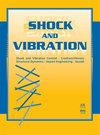Uncertainty Quantification of Vibroacoustics with Deep Neural Networks and Catmull–Clark Subdivision Surfaces
IF 1.2
4区 工程技术
Q3 ACOUSTICS
引用次数: 0
Abstract
This study proposes an uncertainty quantification method based on deep neural networks and Catmull–Clark subdivision surfaces for vibroacoustic problems. The deep neural networks are utilized as a surrogate model to efficiently generate samples for stochastic analysis. The training data are obtained from numerical simulation by coupling the isogeometric finite element method and the isogeometric boundary element method. In the simulation, the geometric models are constructed with Catmull–Clark subdivision surfaces, and meantime, the physical fields are discretized with the same spline functions as used in geometric modelling. Multiple deep neural networks are trained to predict the sound pressure response for various parameters with different numbers and dimensions in vibroacoustic problems. Numerical examples are provided to demonstrate the effectiveness of the proposed method.利用深度神经网络和 Catmull-Clark 细分曲面量化振动声学的不确定性
本研究针对振动声学问题提出了一种基于深度神经网络和 Catmull-Clark 细分曲面的不确定性量化方法。利用深度神经网络作为代用模型,可有效生成用于随机分析的样本。训练数据通过等几何有限元法和等几何边界元法的耦合数值模拟获得。在模拟中,几何模型采用 Catmull-Clark 细分曲面构建,同时,物理场采用与几何建模相同的样条函数离散化。对多个深度神经网络进行了训练,以预测振动声学问题中不同数量和尺寸的各种参数的声压响应。我们提供了一些数值示例来证明所提方法的有效性。
本文章由计算机程序翻译,如有差异,请以英文原文为准。
求助全文
约1分钟内获得全文
求助全文
来源期刊

Shock and Vibration
物理-工程:机械
CiteScore
3.40
自引率
6.20%
发文量
384
审稿时长
3 months
期刊介绍:
Shock and Vibration publishes papers on all aspects of shock and vibration, especially in relation to civil, mechanical and aerospace engineering applications, as well as transport, materials and geoscience. Papers may be theoretical or experimental, and either fundamental or highly applied.
 求助内容:
求助内容: 应助结果提醒方式:
应助结果提醒方式:


